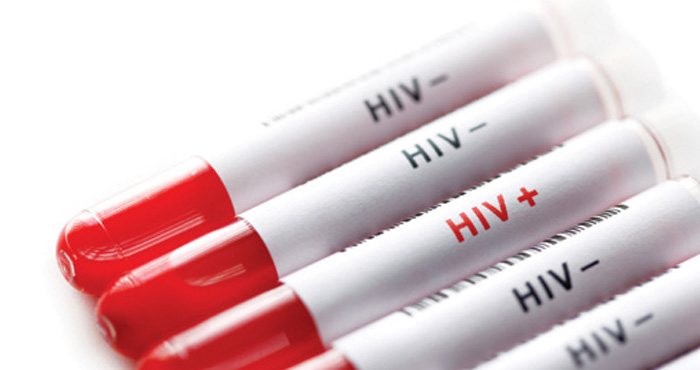Great expectations
In Clinical
Follow this topic
Bookmark
Record learning outcomes
Public Health England is urging commissioners to recognise the untapped potential of community pharmacy when it comes to sexual health services

Learning objectives
After reading this feature you should be able to:
- Discuss the contents of the PHE report on pharmacy and sexual health
- Identify the key opportunities for increased pharmacist intervention identified by PHE
- Navigate sensitive professional issues around sexual health and contraception.
Public Health England (PHE) is calling on commissioners and other healthcare professionals to recognise the capacity and capability of community pharmacy teams to deliver consistent and high quality sexual and reproductive health services.
In its recently published report, The Pharmacy Offer for Sexual Health, Reproductive Health and HIV – a Resource for Commissioners and Providers1, PHE says that further embedding pharmacy into existing work streams for sexual and reproductive health and HIV has the scope to deliver a whole host of benefits including:
- Improved availability of key services
- Reduction of health disparities
- A boost to the nation’s sexual health
- A lower burden of care imposed on other service providers.
Sexual, reproductive and HIV services via pharmacies are currently highly variable and patchy. According to figures in the PHE report (from 2014/15) 47 per cent of pharmacies were commissioned to provide emergency hormonal contraception (EHC), 28 per cent to provide chlamydia screening/treatment, and a much smaller proportion (9 per cent) to provide free condoms.1
While PHE acknowledges that not all pharmacies will be willing or able to deliver the sexual and reproductive health services outlined in the report, it suggests that commissioners seek to commission those services most appropriate for local need from their community pharmacies.
Key benefits that pharmacies can offer in the delivery of sexual health, reproductive health and HIV services include improved access to services due to convenience of location and flexible opening, and confidential, face-to-face contact with a trusted professional.
The report encourages pharmacy teams to use every opportunity to engage in conversations promoting better sexual and reproductive health. Healthy living pharmacies – of which there are now over 8,000 in England – are specifically highlighted as an exemplary platform through which to promote further sexual health campaigns.
So what specific areas can pharmacies target to better safeguard the sexual health of their local populations, particularly those customers most at risk from poor sexual health? The PHE report identifies five key opportunities for increased intervention:
1. Chlamydia
One of the commonest sexually transmitted infections (STIs) in England, chlamydia is easily treated with a short course of antibiotics but, if left undetected, can lead to long-term health problems such as pelvic inflammatory disease, infertility and epididymo-orchitis (inflammation of the testicles).
Although the National Chlamydia Screening Programme (NCSP) cites community pharmacies as one of the core service providers equipped to provide screening for the bacterial infection, only about a third of pharmacies in the country are currently commissioned to provide the service.1 And just 1 per cent of the 1.3 million chlamydia tests undertaken in England in 2017 were carried out in pharmacy.2 The NHS recommendation that people under 25 years of age and sexually active get tested for chlamydia annually or whenever they change sexual partners illustrates the scope for a strengthened pharmacy role.3
“Open access services where people can be tested and treated for STIs rapidly and confidentially, and notify their partners, encourages people and their partners to get tested, subsequently preventing onward infection...and [reducing] healthcare costs for sequelae such as pelvic inflammatory disease, subfertility and ectopic pregnancy,” says the report.1
Moving forward, PHE envisages an increased opportunity for commissioning chlamydia screening from pharmacies as part of a package of other similar services such as the C-Card scheme or EHC. This is likely to prove less costly than a full STI screen carried out by a GUM service. The treatment of low-risk, uncomplicated chlamydia cases could also be embedded within the pharmacy service, freeing up capacity for GPs and GUM clinicians to focus on the more complex, high-risk patients. Pharmacy teams looking to deliver this service should undergo appropriate training – notably CPPE’s chlamydia testing and treatment course.
2. Condoms
Condoms represent a simple ‘one stop shop’ when it comes to safeguarding sexual health – protecting against the majority of STIs, including chlamydia and HIV, as well as acting as an effective means of contraception. Condom distribution programmes such as the C-Card scheme are the cornerstone of current public health efforts to provide and promote their use among young people aged 13-24 years – and pharmacies rank among the most popular and widely distributed C-Card outlets.
According to a recent survey of sexual health commissioners in England, community pharmacies made up the bulk (around 30 per cent) of total reported C-Card venue types.1 According to the PHE report, key areas of action where pharmacies can further consolidate their role in condom distribution include:
- Increasing awareness and encouraging uptake of local community pharmacy C-Card schemes using social media, posters and leaflets
- Engaging with existing local C-Card scheme providers and establishing links with other sexual, reproductive health and HIV services to optimise signposting
- Proactively engaging in discussions on safe sex and the use of condoms, especially among young people, during appropriate pharmacy consultations
- Taking the opportunity when providing condoms to provide support and advice on other aspects of sexual health including STI screening, pregnancy testing and drug/alcohol abuse where appropriate.
3. Contraception
“Extending the role of community pharmacists to supply oral contraceptive pills and to establish explicit links to the timely provision of long-acting reversible contraceptives (LARCs) could reduce rates of unwanted pregnancies and relieve the burden on GPs to allow them to focus on more specialist services,” notes PHE. To achieve this aim, the PHE suggests that patient group directions (PGDs) be developed to enable pharmacists to supply oral contraception in areas where commissioned contraceptive services are currently lacking (see also panel, this page).
Other opportunities for pharmacy action in this setting include undergoing relevant training to ensure the skills needed to provide contraceptive services are up to scratch and taking the opportunity to counsel any female customer seeking EHC or contraceptive advice on the efficacy benefits of LARCs. The Faculty of Sexual and Reproductive Healthcare’s online course on conducting a contraceptive choices consultation and CPPE’s training on contraception are specifically recommended for pharmacists wishing to expand their role in this area.

Oral contraceptives: POM or P?
The public health merits of switching progestogen-only and/or combined oral contraceptives from POM to Pharmacy medicine status remains a subject of debate among researchers and policymakers.
A recent systematic review, published in BMJ Global Health, looked at data on the effectiveness, value and customer preferences surrounding the OTC availability of oral contraceptives (OC)4. It found that OTC pill users showed higher rates of OC continuation over time. There was also some indication that OTC pill users had lower rates of side-effects and slightly higher rates of use despite contraindications.
The results from the review suggested general support for the OTC availability of oral contraceptives from pharmacies, with more backing from women and pharmacists than physicians.
Overall, the review authors concluded that “making ... contraceptives available OTC, perhaps with progesterone-only pills that have fewer contraindications to use, may be an approach for increasing access to and use of this effective contraceptive option”.4
A pilot study carried out in South London in 2009 highlighted the clinical competency of pharmacists in supplying the contraceptive pill using a PGD and showed significant customer satisfaction with the service provided.
4. Emergency hormonal contraception
Emergency hormonal contraception (EHC) has been available OTC in pharmacies for nearly 20 years. However, the recent refusal by a LloydsPharmacy pharmacist in Brighton to supply EHC because it violated her personal beliefs has served to whip up considerable controversy in the media. There have been calls for a ban on pharmacists being able to refuse patient care based on personal or religious values. In this case, the customer (a 41-year-old woman who had already ordered and paid for the morning-after pill online) was told to return the following day or travel to the next nearest branch that was open on a Sunday – 10 miles away.
With the supply of EHC sometimes a contentious issue, what can pharmacy teams do to sensitively balance their own belief systems against the provision of good, patient-centred care? “Where a pharmacy professional is not willing to provide a pharmacy service based on their personal or religious beliefs, they must use their professional judgement, consider each situation on a case-by-case basis and ensure that the patient
can access the service without hindrance,” says the NPA.5
“Referral to another healthcare professional or organisation may not always be appropriate or realistic – for example, in rural areas or in cases of patients who may be restricted in their ability to travel either through financial reasons or because they are in a vulnerable patient group. In addition, signposting a patient to an alternative local pharmacy in the hope they will receive adequate care is not appropriate. Pharmacists must take responsibility to ensure that patients receive the care they need as a priority.”5
From a practical perspective, the NPA suggests the following steps to navigating sensitive professional issues around sexual health5:
- Keep hard copies of the GPhC’s ‘Guidance on religion, personal values and beliefs (2017)’ on hand in the pharmacy
- Include the requirement to document all decisions, discussions and referrals within the pharmacy’s SOP – and ensure the materials are available to carry this out
- Train staff on situations where personal/religious beliefs have the potential to impact patient care. Role playing can be useful to emphasise sensitive handling of patient requests and maintenance of privacy and dignity.
The convenience of community pharmacy means it remains the main conduit for women accessing EHC within the crucial 72-hour time window. Opportunities for further action in this area highlighted by the PHE report include:
- Making the case to local NHS commissioners in support of EHC services through community pharmacy (currently less than half of pharmacies in England provide this service)
- Proactively driving discussions with customers on safe sex and contraception (where appropriate)
- Brushing up on contraceptive-specific training where required.
Key facts
- Public Health England is keen to see more pharmacies involved in offering sexual health services
- HLPs are specifically highlighted as an “exemplary platform” for sexual health service provision
- Chlamydia tests carried out in pharmacy in 2017 comprised just 1 per cent of the total tests undertaken in England that year.
5. HIV
Minority groups such as gay and bisexual men, black African communities and other ethnic minority groups are disproportionately impacted by HIV. Pharmacy is perfectly positioned to combat these inequalities by reaching target populations who may fall through the cracks of conventional health services, providing not only testing but ongoing support and advice (particularly on safe sex) to infected individuals.
Improved uptake and coverage of HIV testing is key to reducing the spread of infection by diagnosing and treating earlier. According to PHE, the priority moving forward lies in the promotion of combination HIV prevention approaches including condom use, increased HIV testing coverage, pre-exposure prophylaxis (PrEP) awareness, and the role of treatment as prevention (TasP).
Training opportunities in this area are offered by the HIV Pharmacy Association in partnership with the RPS, as well as CPPE, and may be included within service level agreements agreed by commissioners.
One community-funded project in Cumbria, financed by the National HIV Prevention Innovation Fund, has shown the opportunities that exist for pharmacy in HIV. Under this initiative, customers were able to access a free, rapid HIV test from selected pharmacies, with results obtained in just
five minutes.
Almost half of the people tested under this pilot scheme had never been tested before – highlighting the potential of pharmacy to boost screening coverage rates. The anonymity afforded by pharmacies was cited as a key strength in the Cumbrian case study, particularly for vulnerable groups such as gay and bisexual men, ethnic minority groups and those living in rural areas.

Setting up a sexual health service
For pharmacists wishing to take up the gauntlet laid down in the PHE report, the Royal Pharmaceutical Society (RPS) provides a sexual health toolkit specifically intended to support the integration of pharmacy into care pathways for sexual and reproductive health. The toolkit highlights many of the current and new pharmacy sexual health services across the UK, the regulatory and professional background to these, the drivers for change and potential routes by which services could be delivered.
Other fundamental factors to consider when establishing a new pharmacy-delivered sexual health service include:
- Identify need: Determine the gaps in current service provision in your area and learn about specific services that your pharmacy could provide to fill these gaps
- Consider costs: This should include a breakdown of potential costs that will need to be borne by the pharmacy (e.g. facilities, equipment and time for staff training), as well as details of the local procurement process via which the pharmacy will be paid for the services provided. Be aware that some commissioners will implement activity-based payments or specify a minimum activity level within the contract
- Iron out logistical issues: Delivering a sexual health service requires an effective IT system to collect, collate and monitor activity related to sexual health outcomes
- Invest in and implement training: It is important that all staff are appropriately trained to handle confidential and often sensitive issues surrounding sexual health
- Establish effective signposting: This should encompass GPs, GUMs, other pharmacies (e.g. for tier 2 services; see Umbrella panel, left) and voluntary organisations
- Promote your service: Effective promotion is key for the successful delivery of any pharmacy-led service. Top tips include:
- Using national or international awareness events/campaigns on sexual health as an opportunity to highlight specific services available in pharmacy
- Consider using the pharmacy’s web or social media pages to publicise services. This is particularly valuable in engaging with young people in the local area
- Create your own referrals list of local STI testing sites/GUM clinics and display this as part your campaign materials.
The anonymity afforded by pharmacies was cited as a key strength
Key asset
Looking to the future, the PHE report concludes that commissioners need to recognise the real value of pharmacy teams as a key asset for the provision of sexual and reproductive health and HIV services. The overarching goal is to ensure consistent quality standards and seamless delivery of a comprehensive service within pharmacies across the country.
Achieving this will require a more consistent and integrated approach, working alongside commissioners and other professionals to harness the full potential of community pharmacy. “Without integration, people will continue to experience fragmented service delivery, resulting in poor sexual and reproductive health, unplanned pregnancies, and subsequent personal and societal costs,” the report concludes.
Putting up the umbrella...
Birmingham’s Umbrella Sexual Health initiative is an example of what commissioning pharmacy sexual health services can achieve.6,7 The aim of the project was to engage with a broad range of community pharmacies by offering tier 1 and the more advanced tier 2 sexual health services.
Tier 1 services include EHC, condoms and dispensing self-sampling STI kits, while tier 2 extends the initiative with STI testing and kit provision, chlamydia treatment, hepatitis B vaccination and initiation of regular contraception.
An electronic patient record is used to record data from the consultation and generate activity-based payments, with specific recognition of high performing services. Training for pharmacists is provided face-to-face and online, and lines of communication kept open for ongoing support and sharing of good practice.
This collaborative approach in Birmingham has borne fruit with 163 community pharmacies (100 tier 1 and 63 tier 2) now contracted to deliver sexual health services on behalf of Umbrella – and overall service activity in community pharmacies continues to ramp up. As of late 2018, the service was providing over 2,000 EHC consultations, 120 chlamydia screens and around 50 treatments, 300 STI kits, 180 progestogen-only pills and 30 contraceptive injections per month.
Commenting on the approach, Nicola Thorley, sexual health and HIV consultant at University Hospitals Birmingham NHS Foundation Trust, says the community-based model enables less costly additional service provision for previously unmet demand, allowing patients who find it difficult or prefer not to attend a clinic-based service to access services locally.
“Improved access to screening and testing within community settings enables earlier diagnosis of STIs and blood-borne viruses, and has the potential to reduce pressure on staff at overbooked clinics,” she says.
Key learning points from the initiative include the importance of engaging with stakeholders, building relationships and reviewing communication pathways. Investing in training and health promotion from the outset also proved vital. Given the heterogeneity of IT systems within the healthcare setting, it was important for pharmacists that familiar IT systems were used to deliver the services and that the processes of procurement, administration and training were streamlined.6
References
- Public Health England. The Pharmacy Offer for Sexual Health, Reproductive Health and HIV: A Resource for Commissioners and Providers. Published March 2019
- Public Health England. Sexually transmitted infections and screening for chlamydia in England, 2017. Health Protection Report Volume 12, Number 20. 8 June 2018
- NHS Choices
- Kennedy C et al. BMJ Global Health 2019; 4:e001402
- National Pharmacy Association (NPA). Refusal of pharmacy services based on personal/religious beliefs and values
- NICE. Shared learning database. Collaborating with community pharmacists to deliver sexual health services
- PSNC. Services database: Umbrella Sexual Health Service (Birmingham Area).
